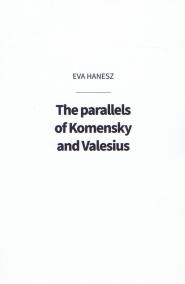The parallels of Komensky and Valesius
Dátum vydania: 16.07.2024
I dedicate this short study of about 72 pages to pastors, teachers of religion, pedagogues and teachers, as well as to everyone who likes to dive into history.
We write the 1500-1600s, when the story takes place, when – to counter the excesses of the Catholic Church – a new religious trend is emerging, the Reformation, which is gaining more and more attention ...
Detaily o knihe
Počet strán: 71
Rozmer: 209x226x6 mm
Hmotnosť: 118 g
Jazyk: Anglicky
EAN: 9788057056171
Rok vydania: 2024
Žáner: Dejiny
Typ: Paperback
Zákazníci, ktorí si kúpili túto knihu, si kúpili aj...
O knihe
I dedicate this short study of about 72 pages to pastors, teachers of religion, pedagogues and teachers, as well as to everyone who likes to dive into history.
We write the 1500-1600s, when the story takes place, when – to counter the excesses of the Catholic Church – a new religious trend is emerging, the Reformation, which is gaining more and more attention in Europe. It also has many followers in Bohemia (the Czech Republic).
In this work, I present this process through the life paths of two great personalities. The first Ján Amos Komenský, who was born on March 28, 1592 in Nivnice near Uherský Brod, took his name from the nearby village of Komna. He was an exceptional talent for his time. He was 26 years old when he was ordained a minister. But when the Habsburgs came to the scene in 1627, a law was passed in Bohemia stating that Catholicism was the official religion and that those who did not accept it had to leave the country, so he left his homeland. He is looking for his place in Europe, but he always wanted to return home. He is known as a teacher and preacher. He wrote a lot of pedagogical works, just to name a few... during his stations, e.g. he also visited Sárospatak, where he reformed the school system, although his secret plan was to persuade the Rákóczis to raise up the flag. However, this did not work. He died in Amsterdam in 1670, his grave is in Naarden.
In the meantime, János Antal Valesius also appears, who, due to the aforementioned persecutions of Protestants, was born in Szkalice in 1662 as the child of second-generation Czech emigrant parents. He too never stopped to get back to his homeland, during his life. His life path also testifies this. He selected talented young people, whom he taught in Debrecen and Pápa in higher sciences, so that they could preach the Protestant faith on their return to Bohemia. But when one of his disciples, György Jessenius, was ordained by him as a pastor in the church in Réthe, thereby taking on the office of the bishop, he causes displeasure among the Catholic priests, so he is arrested in the night of 1740 in his Ócsa parish and thrown into the prison of Komárom Castle, from where only more than after a year is he released, by Maria Theresia's request for mercy, and they let him know that this can never happen again. The last station of his life was Nagykeszi, where he died at the age of 95, and he is also buried here.
The persecution of the Protestants ended only in 1781 by II. Joseph’s Patent of Toleration.
Neither Komenský nor Valesius could lived this.
In the book, I explain whether Valesius was a bishop or not. He was not a bishop, he took the episcopal office as a dean only when he was ordinating a pastor. But he still created greatness. About 139 publications have survived for posterity. His book is worth reading.
And these two men are parallel because, although they did not live at the same time, the goal was the same for both of them, they worked on the same matter. I can state that with Valesius' actions he was the first Hungarian-speaking Czech -bishop-. And it deserves its rightful place in history.













